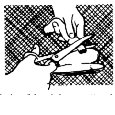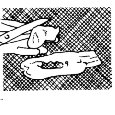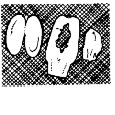 |
|
|
 |
 |
 |
|
Clam Digging

How to Dig:
The speed at which a razor clam reburies itself is very important to the clam digger. The faster the clam descends in its burrow, the harder the clam digger has to work to extract this tasty bivalve. The speed depends on many things: temperature, consistency of the sand, and the size of the clam, for example. Razor clams are "cold-blooded" organisms. Low temperatures make the clam sluggish and slow; warmer temperatures make them faster. In March and April, razor clams near the surface tend to slow down, due to the cooler spring temperatures. Mobility increases during July and August.

Size plays a part, too. One investigator found that a young, small clam could rebury itself in seven seconds. Another researcher found that the razor clams he studied could dig several feet deep at nine inches per minute. One of the fastest rates of descent reported was one inch per second (but the clam could not sustain this rate for an extended period of time.)
Razor clams move by extending their foot (digger) into the sand below their shell, then flattening out the tip of the foot like a rivet head. The clam then pulls itself down to its anchored foot. Because this is their method of movement, they are able to move faster in soft, wet sand near the water’s edge than in the dryer, packed sand farther from the water.
How to Catch a Razor Clam
Razor clams are found by the hole left on the sand surface as the clam’s neck is withdrawn. When this "show" or "dimple" is found, a scoop or two of sand is dug away beside the dimple and the clam is found by reaching into the sand in the side of the hole. Be careful not to dig too close to the dimple or the clam will be damaged.
Almost all clams with broken shells will die, therefore diggers are required to retain all razor clams re- gardless of size. Clams with broken shells are slightly harder to clean, but their eating quality is not affected.
Most clams are dug with special narrow-bladed clam shovels. These shovels are available in most Alaskan hardware and sporting goods stores. Clams can also be dug with a "clam gun" or "tube". This is simply a 4 - inch diameter pipe or tube with a handle and a small air vent at the closed upper end. Digging is done by pushing the tube down over the clam dimple with a rocking motion. The air vent is then blocked with a finger or thumb and the core of sand, with the clam enclosed, is pulled up and dropped on the beach. Guns do not work well on beaches containing significant amounts of gravel or rock.
Using the Clam Gun
|
1. Place the tube over the "show." Check the impression of tube in the sand to center the clam.
|
2. Work the tube in carefully with an up-and-down, rocking or twisting motion. Place finger or thumb over air vent, pull up. Remove the core of sand holding the clam. Do this in two or more stages if desired. DON’T HURRY!
|
Dry Digging with the Shovel
|
1. Insert shovel 3 to 6 inches from the "show." This distance depends upon the length of the blade and the amount of "hook" it has.
|
2. Remove sand with a lifting motion. try twisting the shovel at the same time. Note that the blade remains nearly vertical.
|
|
3. Succeeding shovelfuls expose the clam enough to reach down and remove it by grasping the neck or shell. Note that the shovel remains away from the clam.
|
4. DON’T pry back on the handle. This cuts off the neck or smashes the clam. Broken clams and excessive haste can cause cut fingers.
|
Cleaning Razor Clams

1. The clam meat is shucked with a sharp knife by cutting the connecting muscle to each shell. |

2. Remove entire clam from the shell. |

3. The black tip of the siphon, or "neck", is removed. |

4. Insert the scissor blade through the siphon and split. |

5. The paired gills and palps are removed with two cuts. |

6. Remove the muscular digging "foot". |

7. Split the foot. |

8. Finished clam "steaks". |
Cooking Razor Clams
Most diggers prefer to fry razor clams, and razors make excellent chowder stock. To fry the clams they should be breaded with flour or cracker meal and cooked in an extremely hot skillet or deep fryer. For tender, succulent clams, cooking time should be limited to one or two minutes. Additional cooking time will cause a loss of flavor and the clams tend to become tough and leathery.
|
|
 |
|
|
 |

